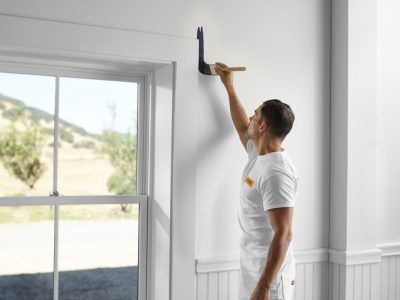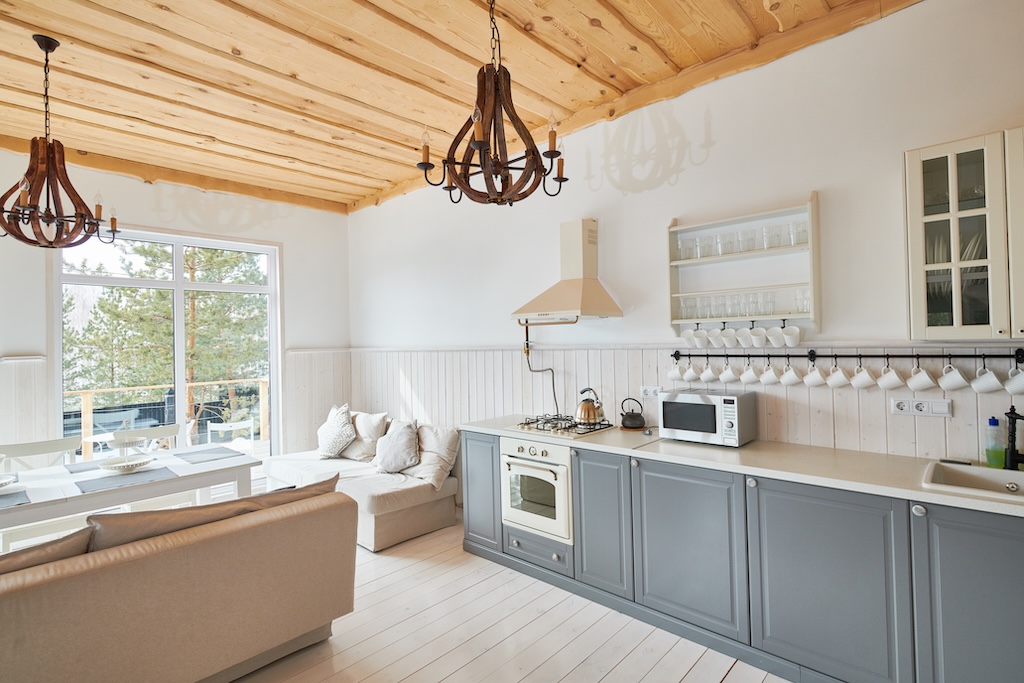Enhance Your Interior Decoration With Comprehensive Color Appointment
The combination of color appointment right into indoor style offers an one-of-a-kind chance to improve and elevate the visual and psychological resonance of a room. By engaging with an experienced shade expert, you can browse the complexities of color option, making sure that your options not only complement building attributes but additionally resonate with individual design and emotional impact.
Advantages of Shade Appointment

Moreover, shade consultation aids in making the most of natural light and enhancing spatial assumption. Lighter tones can make a space show up even more large, while darker tones develop an intimate setup. Cleveland Metro Painting Specialists. This tactical application of shade can dramatically affect the total setting of any kind of interior area
Furthermore, expert specialists possess a detailed understanding of current trends and timeless classics, making certain that the selected shades will remain appealing in time. This insight can conserve clients from costly redesigns in the future. Color consultation encourages clients by providing them with a clear vision and instructions, fostering self-confidence in their layout options and inevitably leading to an extra enjoyable and successful indoor style end result.
Comprehending Color Psychology
The relevance of color psychology in indoor style can not be overstated, as it dives into the psychological and mental results that different hues can evoke in people. Colors can influence state of mind, habits, and also productivity, making them a vital factor to consider in any kind of design task.
For circumstances, warm colors such as red, orange, and yellow are often associated with power and warmth. They can promote sensations of excitement and comfort, making them appropriate for social areas like living kitchen areas or spaces. Conversely, amazing shades like blue, green, and purple have a tendency to stimulate peace and tranquility, making them optimal for bed rooms or reflection areas.
Furthermore, making use of neutral tones can produce a well balanced setting by allowing the bolder colors to stand out without overwhelming the detects. Recognizing these emotional impacts allows developers to create spaces that not only look visually pleasing however likewise promote emotional wellness.
Integrating shade psychology into interior decoration includes a thoughtful choice of colors tailored to the designated function of each space, ultimately enhancing the overall experience for its occupants. This recognition is essential for achieving a practical and harmonious interior setting.
The Shade Wheel Clarified
It consists of main shades-- red, blue, and yellow-- that can not be created by mixing various other shades. Tertiary shades result from mixing a primary and a second color, leading to colors such as green and red-orange.
The shade wheel aids developers grasp the connections between colors, including complementary, comparable, and triadic systems. Corresponding colors, positioned opposite each other on the wheel, produce lively contrasts that can invigorate a room.
Utilizing the color wheel in interior style not only improves visual allure but also evokes certain feelings and environments, making it an important recommendation for color appointment. Recognizing these partnerships eventually equips designers to develop rooms that are both aesthetically fascinating and practical.
Choosing the Right Combination
A well-chosen color system can merge a space, enhance its attributes, and stimulate preferred feelings. Different spaces offer different functions and need palettes that show their desired use; for instance, serene shades such as soft blues or eco-friendlies work well in bed rooms, advertising leisure.
Following, take right into account the natural light readily available. Light can dramatically change exactly how shades appear, so it is vital to evaluate the space at various times of the day. Additionally, think about existing building elements and home furnishings. An unified palette ought to match these attributes, creating a cohesive appearance throughout the room.
When choosing shades, use the 60-30-10 regulation, which suggests that 60% of the space should be a dominant color, 30% a secondary color, and 10% an accent color. This ratio makes sure equilibrium and aesthetic interest (Cleveland Metro Painting Specialists). Finally, sample colors on the wall surfaces prior to devoting, as this allows you to see exactly how the shades engage with one an additional and the general setting they create in your interior decoration project.
Dealing With a Shade Specialist

When dealing with a color specialist, the process generally starts with a preliminary examination. Throughout this meeting, you'll discuss your vision, choices, and the existing you could look here components in your room. The professional will certainly examine your requirements and may recommend specific shade combinations that align with your goals.
After developing an instructions, the consultant will offer samples and visual help to aid you imagine the proposed color systems. This action is critical, as shades can appear differently under varying lights problems.
Additionally, a shade expert can direct you in selecting complementary home furnishings, artwork, and devices to balance with your chosen scheme. By working together closely, you can achieve a polished aesthetic that boosts your interiors and develops an inviting ambience. Eventually, the expertise of a shade specialist can significantly improve the overall effect of your design task.
Conclusion
In summary, detailed shade appointment serves as a vital tool for enhancing interior design. By leveraging expert knowledge of color psychology and spatial dynamics, a tailored color palette can be developed to evoke particular emotions and produce a harmonious atmosphere.
By engaging with a continue reading this seasoned color specialist, you can navigate the complexities of color selection, ensuring that your choices not just enhance building functions yet also reverberate with individual design and mental impact. It comprises key colors-- red, blue, and yellow-- that can not be created by mixing various other shades.The shade wheel helps developers grasp the connections between shades, including complementary, similar, and triadic plans.When selecting shades, make use of the 60-30-10 policy, which suggests that 60% of the room must be a dominant shade, 30% a second color, and 10% an accent shade. By leveraging professional knowledge of shade psychology and spatial dynamics, a tailored great post to read shade combination can be developed to stimulate specific feelings and produce an unified environment.